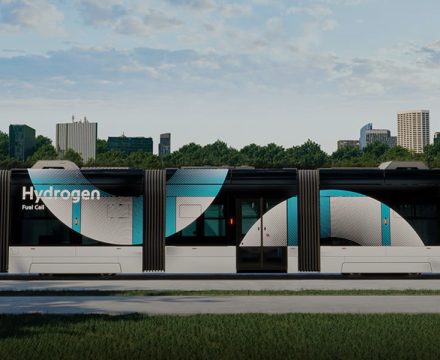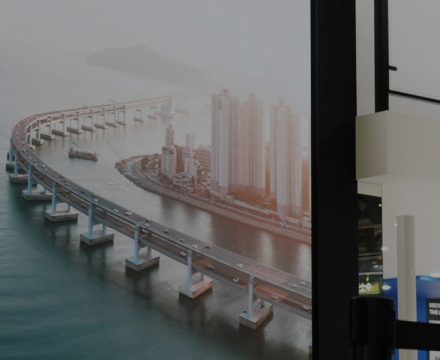Hydrogen is an important energy source that can substitute fossil fuels in future. It is unlimited, accounting for over 90% of the molecules existent in outer space and eco-friendly, producing only pure water in the process of generating energy by combining with oxygen. Actually, global efforts have already continued to move into a hydrogen society. Electricity generation systems and cooling and heating systems using hydrogen have already been commercialized across the globe, and hydrogen electric cars powered by hydrogen are also running on the road.
Hydrogen vehicles that have a wide potential in a hydrogen society vary from trains to vessels and drones, besides cars. Among them, Hydrogen fuel cell trams are gaining attention as an eco-friendly public transport for travel in complex cities.
Hydrogen that fuels hydrogen fuel cell trams
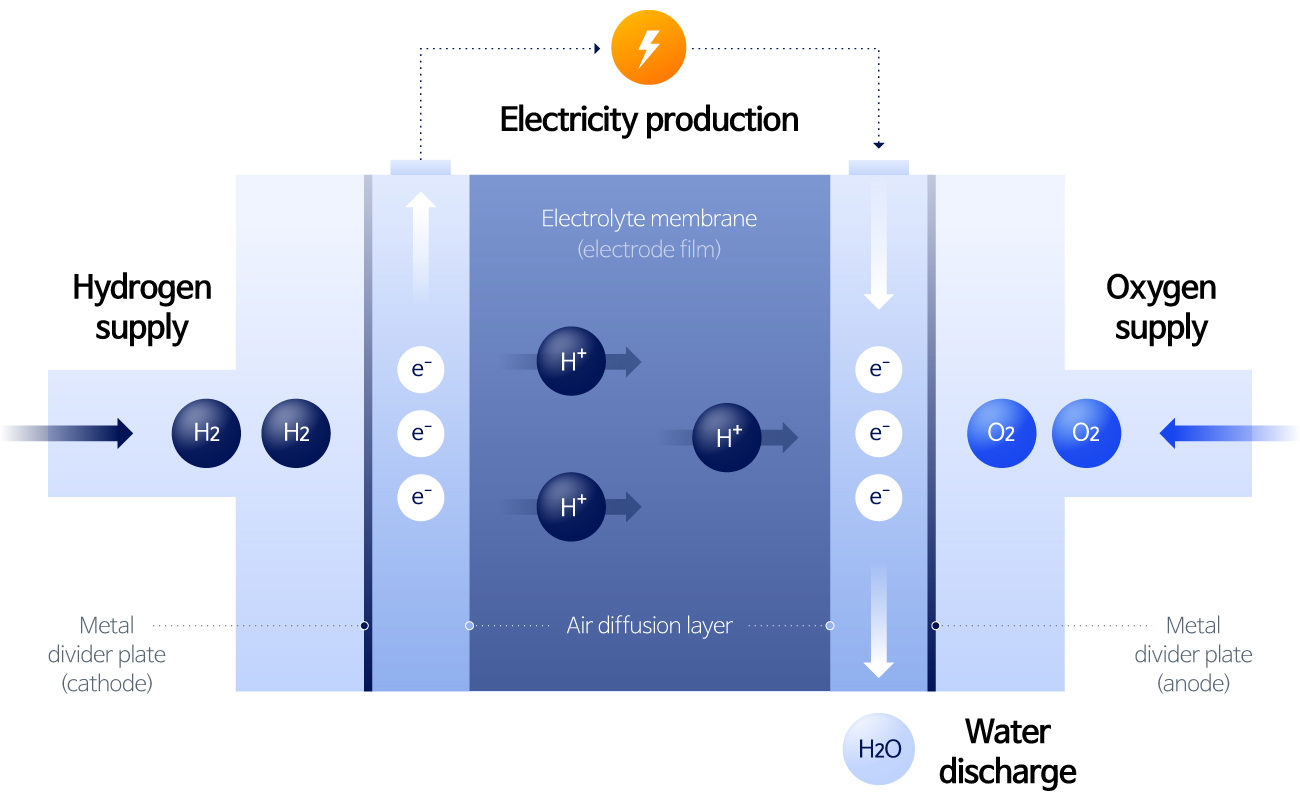
Hydrogen fuel cell trams move using electric energy generated by hydrogen fuel cell loaded inside the trams, unlike the general existing trams. Hydrogen fuel cells that produce electricity directly through electrochemical reaction between hydrogen and oxygen are the core technology of hydrogen vehicles.
The mechanism is that it splits hydrogen supplied to the hydrogen pole into a hydrogen ion and electron, sending the hydrogen ion to the oxygen pole through the electrolyte membrane and the electron to the oxygen pole through an external circuit. During the process, the electron produces electric energy, while the hydrogen ion meets an oxygen ion at the oxygen pole, producing water and heat. Simply put, it is an electricity generator that generates electric energy using hydrogen.
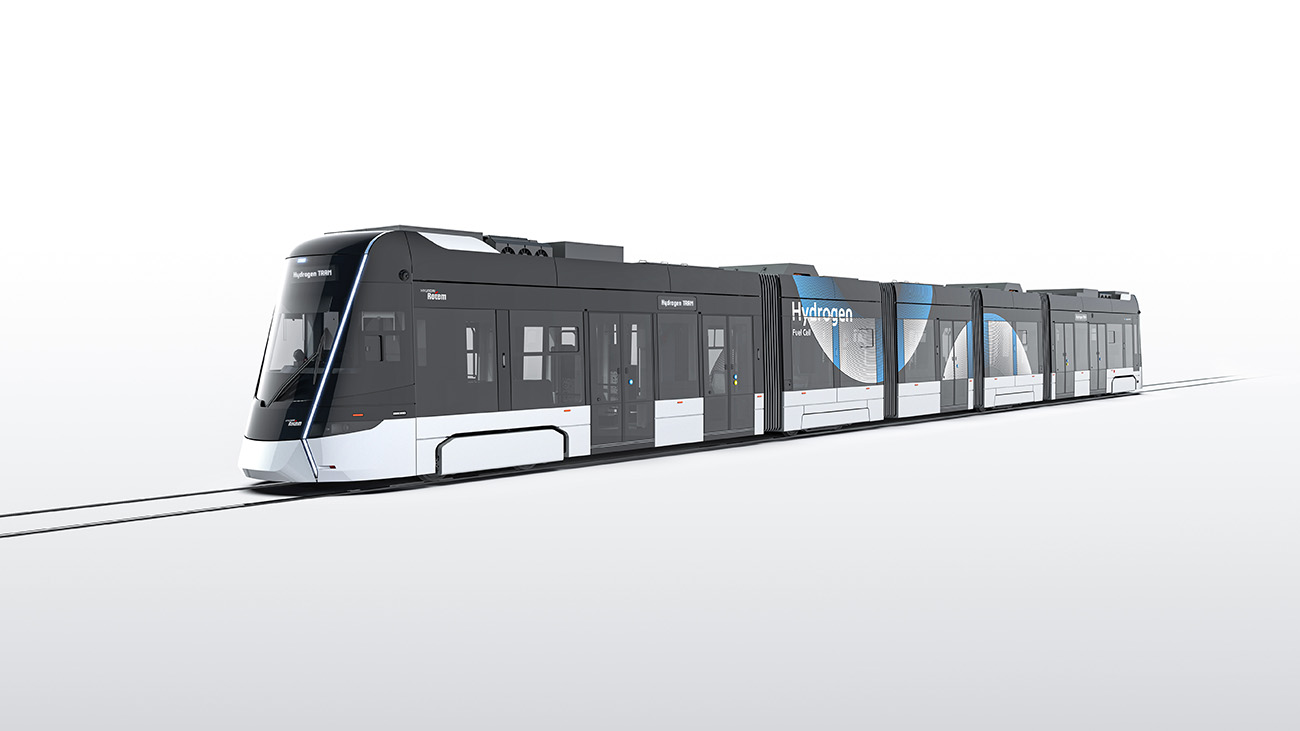
Hyundai Rotem’s Hydrogen fuel cell tram under development uses a hybrid method that combines a hydrogen fuel cell with a battery. The hydrogen fuel cell produces electricity using hydrogen supplied from a hydrogen tank and saves secondary power in an energy storage system (ESS), namely, the battery. The power saved in the battery is used when much energy is required such as starting the engine or speeding up, while the energy from the fuel cell is used for running at constant speed or speeding down. Hyundai Rotem’s Hydrogen fuel cell tram can travel a distance of about 150km on a single charge
Zero carbon emissions during operations, plus air purification effect
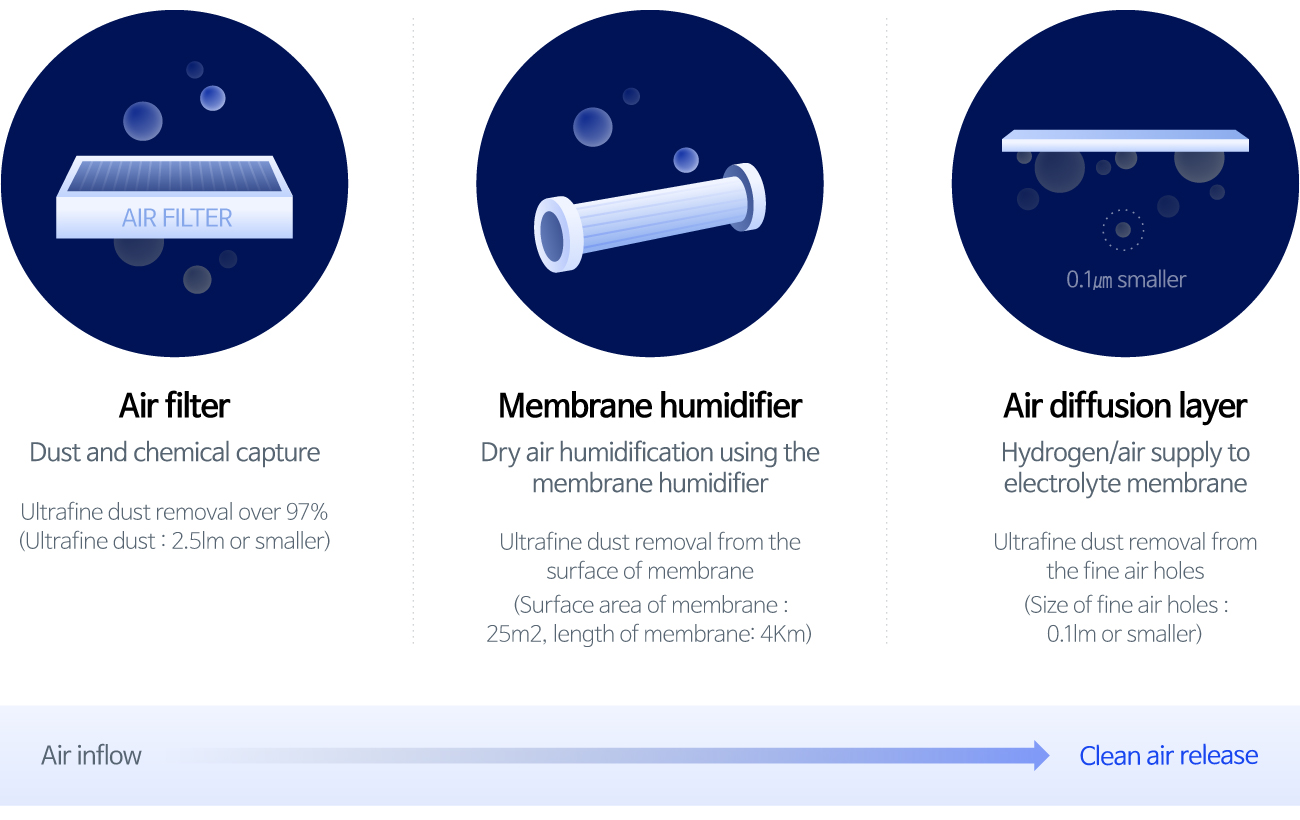
Trams, powered by electricity, are regarded as an eco-friendly transport that produces no carbon. Hydrogen fuel cell trams, also powered by electric energy produced by fuel cell, do not produce carbon and even purify the surrounding air while running, which is different from the existing trams.
The fuel cell installed in the hydrogen fuel cell trams collect outside oxygen to make electric energy. When the collected oxygen has impurities, it is purified through the filter and membrane humidifier for normal chemical reactions. Then, the used air is emitted as purified. Consequently, the trams can purify fine dusts or ultrafine dusts while simply running.
Air purification effect of hydrogen fuel cell tram
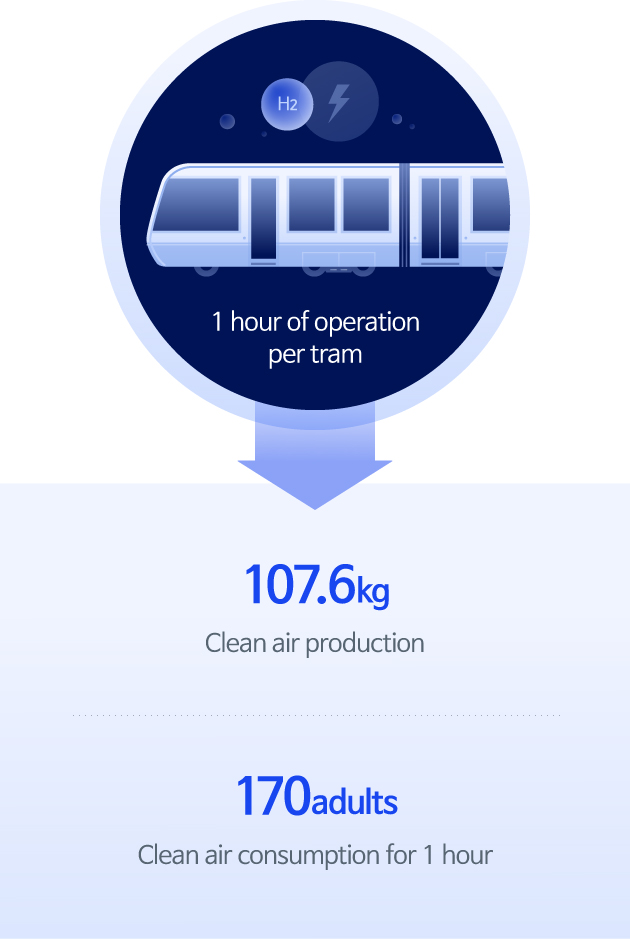
Hyundai Rotem’s Hydrogen fuel cell tram can produce clean air at 107.6kg for an hour of operation, which 170 adults can use for an hour. 1,000 Hydrogen fuel cell trams can purify fine dust emitted from 4,000 diesel cars while running. It is the same carbon reduction effect as 20,000 trees.
As above, hydrogen fuel cell trams are the eco-friendliest transport that not just contributes to de-carbonization and reduction of green-house gas emissions, but also reduction of social expenses by reducing fine dust with air purification function.
Economic transport, hydrogen fuel cell trams
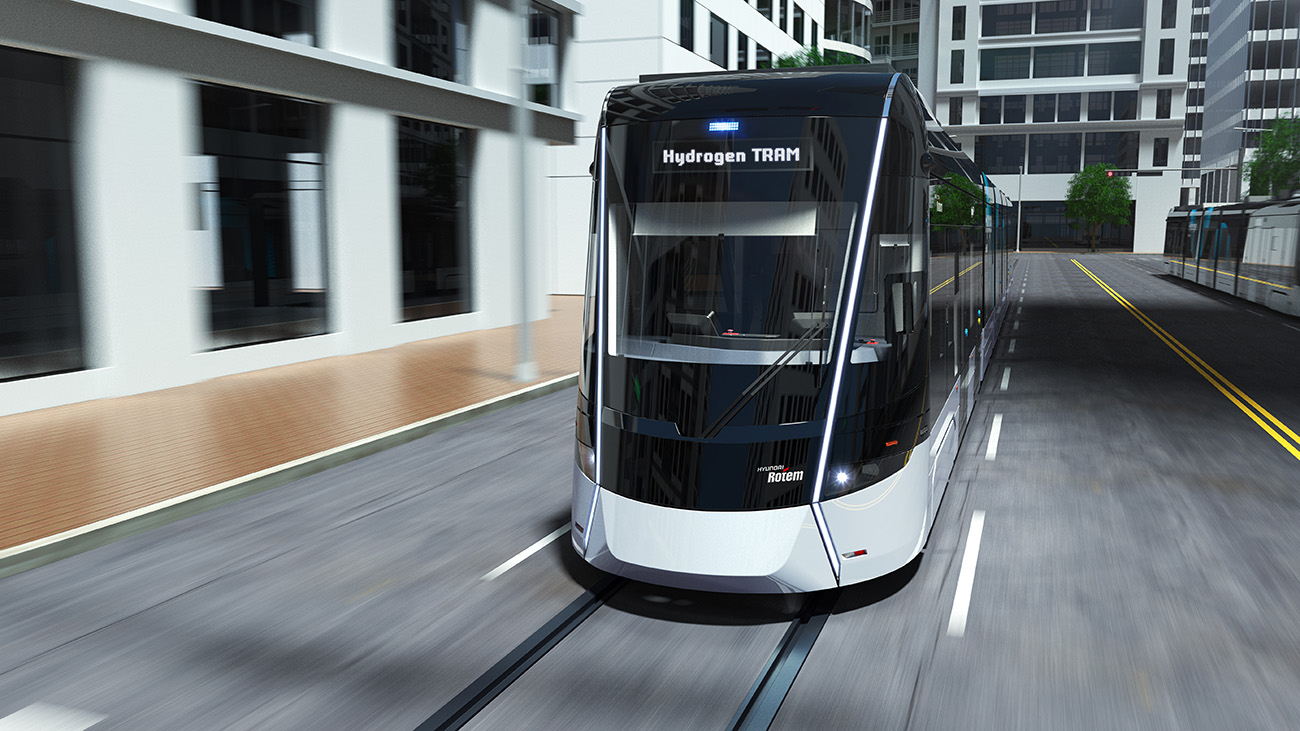
Trains that move along the fixed tracks are economically feasible in operation. They require less energies than cars or airplanes. Basically, it is due to the train system designed to roll several carriages over metal rails. The driving condition of trains is a smaller frictional coefficient than cars (road-tire) and a smaller running resistance as many cars run at the same time. High-efficiency propulsion control using electricity energy is also an advantage. Trams are the result from applying the advantages of the railway system to general roads. In addition, they do not require electricity or power rails, which is more economic in building the initial infrastructure than other urban railway systems such as subway and light rail.
Unlike general wire-type trams that build facilities such as electric wires to supply electric power to vehicles on the road and receive power through the vehicle’s pantograph, hydrogen fuel cell trams are economical because they generate their own power.
In particular, in the case of cities, the construction of wiring facilities is not easy, so the utility of wireless hydrogen fuel cell trams is even higher
ESS trams are also wireless as hydrogen fuel cell trams and rather more economic in short-distance services. However, hydrogen fuel cell trams that are light and use less energy are more appropriate for long-distance services as the consumption rate of vehicle is important. To minimize the economic feasibility, hydrogen fuel cell trams may be operated in complement with ESS trams in a section where short-distance and long-distance services are both required.

Mobility good for mega cities and convenient for the transportation vulnerable
One tram can carry people as many as three buses and 174 cars. Trams are good for carrying over 3,000 passengers an hour (up to 12,000 passengers) and tend to require less costs when the driving distance increases. In particular, as stated earlier, hydrogen fuel cell trams that do not require wire works can be easily installed in complex cities. The introduction of hydrogen fuel cell trams is expected to improve the mobility in cities, thereby solving the endemic problems of mega cities such as air pollution and traffic congestion.
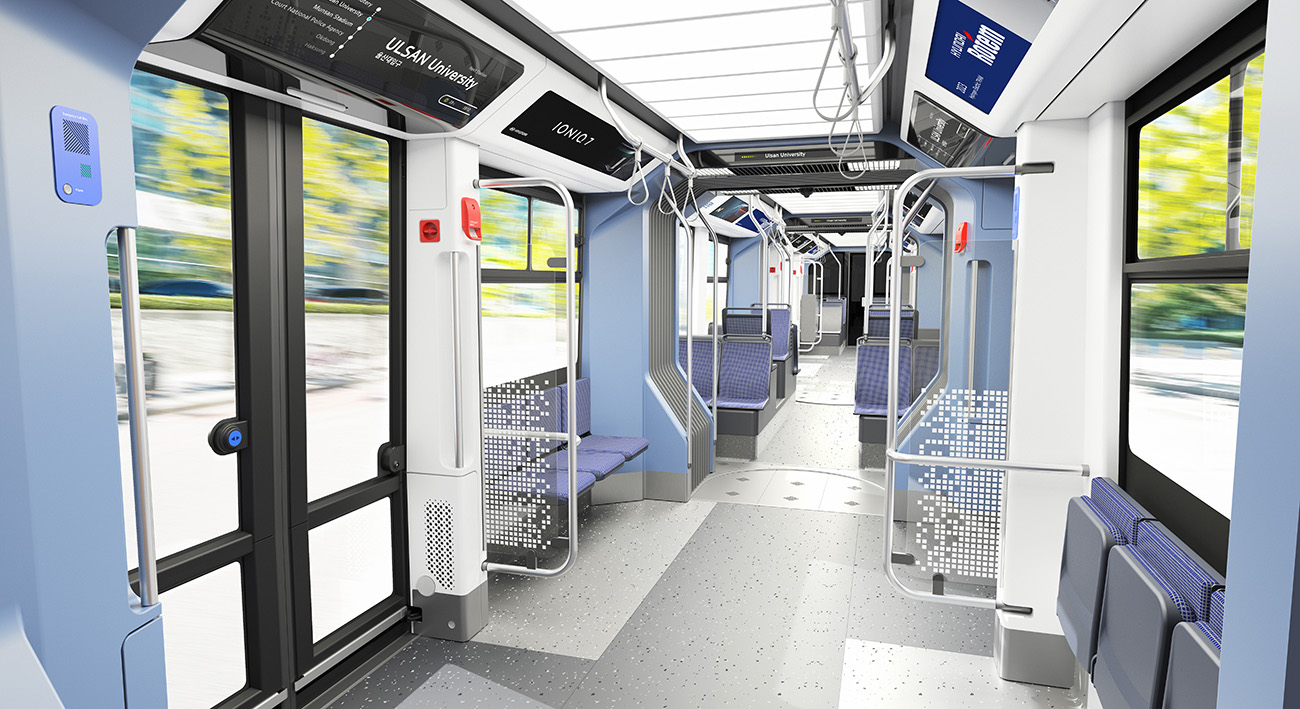
Hydrogen fuel cell trams run a fixed route at a fixed hour the same as the existing trams, reducing the uncertainty in travel time. Also, unlike metro, they are installed directly on the ground, which provides an increased convenience in transferring to other public transports in cities. In addition, Hyundai Rotem’s Hydrogen fuel cell tram is designed to have a low floor by modularizing all units from the fuel cell to the hydrogen tank and cooling system and housing them on the rooftop. The design is very convenient for people with mobility difficulties to board and unboard, as well as provide an extensive indoor space.
When will the hydrogen fuel cell trams be commercialized?
Hydrogen fuel cell tram demonstration national research and development project
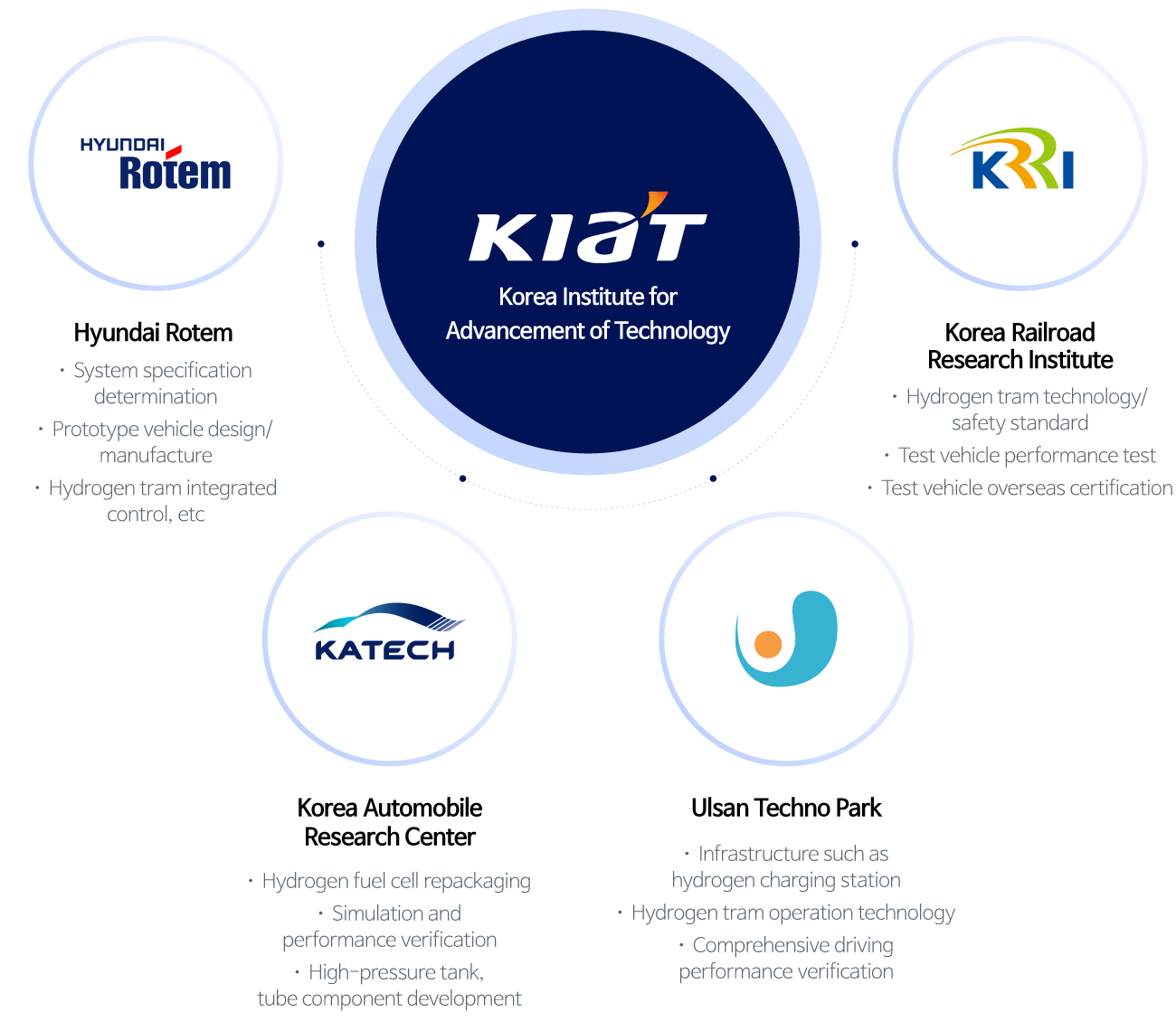
South Korean Ministry of Trade, Industry and Energy is promoting the ‘National Research and Development Project for Hydrogen fuel cell tram Demonstration’ to introduce domestic hydrogen fuel cell trams. Hyundai Rotem, selected as the implementer of the project, together with the Metropolitan City of Ulsan last July 2021, undertook the development of hydrogen fuel cell trams. For the project, Hyundai Rotem develops the fuel cell systems and main components of hydrogen fuel cell trams for export, along with a test vehicle made with the said components and demonstrates and verifies the performance of the test vehicle, participated by Korea Automobile Research Center, Korea Railroad Research Institute, and Ulsan Techno Park.
Hyundai Rotem, which has the know-how to develop a test platform in April 2021 with Hyundai Motor’s hydrogen fuel cell and its own element technology, plans to develop new core parts of hydrogen fuel cell together with the government, companies, research institutes and local governments in2023 and secure new technologies through performance and stability verification. If the demonstration project is successful, early commercialization of hydrogen fuel cell trams is possible
The global demand for hydrogen fuel cell trams is expected to increase by technical advances in hydrogen fuel cells and expanding tram market. Hyundai Rotem is predicted to become a game changer by obtaining a technical competitive edge against other train manufacturers through the project. Moreover, it plans to early introduce more eco-friendly hydrogen fuel cell trams as part of continued efforts to reduce environmental contamination.

